ἐπειδή τε ἐπίστευσεν ὅτι τελευτήσει, ἔφι [Οὐεσπασιανός], "θεὸς ἤδη γίνομαι."
Because he knew that he was about to die, [Vespasian] said, "I'm already becoming a god!"
Dio Cassius, Roman History, Epitome of Book LXVI 17.3
prima quoque morbi accessione: "Vae," inquit, "puto deus fio."
As soon as death had caught him fairly in its crosshairs, he said, "Oh crap, I think I'm about to be a god!"
Suetonius, Lives of the Caesars, Vespasian, XXIII.4
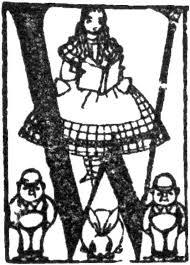 ITHIN THE CONTENTS of an email dated May 6, 2017, Ian Carradice (RIC co-author, formerly of the British Museum and St Andrews University, and now enjoying a pastoral retirement involving a surfeit of sheep) pointed out to me that there remains much work to be done on the identification or explanation of ancient coin types, "I think, for instance," Prof Carradice wrote, "that the pulvinaria series introduced by Titus may deserve more consideration."
ITHIN THE CONTENTS of an email dated May 6, 2017, Ian Carradice (RIC co-author, formerly of the British Museum and St Andrews University, and now enjoying a pastoral retirement involving a surfeit of sheep) pointed out to me that there remains much work to be done on the identification or explanation of ancient coin types, "I think, for instance," Prof Carradice wrote, "that the pulvinaria series introduced by Titus may deserve more consideration."
So there you go, it's like I have been handed a fiat from on high! Don't worry, Professor, I'm on the job!
On the other hand, the elder Pliny (Nat.Hist. XXXV.36.84-85) relates an advisory tale about the painter Apelles of Kos, interrupted in his work one day by a shoemaker who complained that Apelles hadn't gotten the sandal exactly right, something about an extra loop. The painter listened carefully to what the shoemaker had to say and then deftly corrected the problem in the painting. When the shoemaker next began to complain about the way Apelles had painted the leg, the greatest painter of antiquity hushed him and said to him, "I'll listen to anything you have to say about sandals, but not about legs." From this story we get the obscure English word ultracrepidarian (above the sandal), referring to somebody making "wise" pronouncements outside his field of expertise.
Sadly, I can't go all the way back to Titus without risking a serious ultracrepidarian error myself, since the further I get from the reign of Domitian, in either direction, the less and less do I seem to know what I'm talking about. I'm on much firmer ground discussing what survived of Titus's pulvinaria issue among the ten or so reverse types struck by Domitian in 81. Today I am launching a four-part series of blog articles to examine what RIC calls "Group 1," in which I will describe and try to interpret the meaning behind the reverses of the first four denarii in the Domitian section, RIC 1, RIC 2, RIC 3 var, and RIC 5, all of them having been already introduced by Titus--
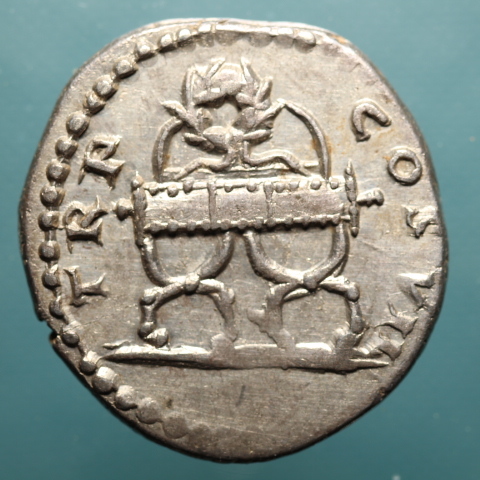
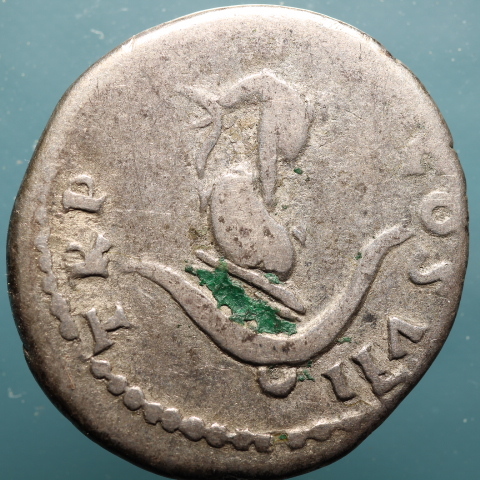
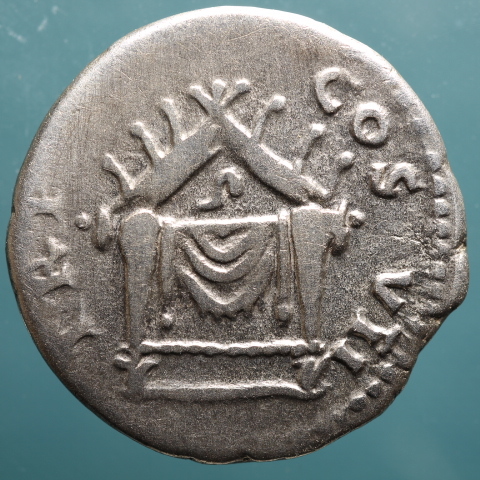
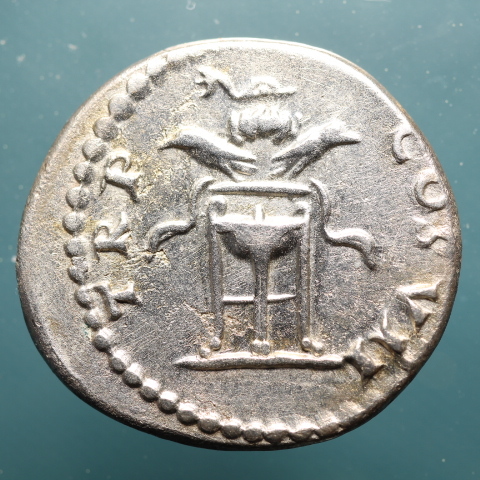
Thus we can skip the question, What did these reverse types mean to Titus? and ask instead, Why were these four specifically chosen by Domitian? That is, chosen for his first commemorative issue, celebrating the addition of tribunican power, TR P, to his other imperial powers. (For a revised dating of this event, please see my blog article of June 10, 2018, "TR P Whatever: Reconsidering Domitian's accepted dies comitialis.") In the present article, Part 1 of the afore-mentioned series, I will now look at RIC 1--
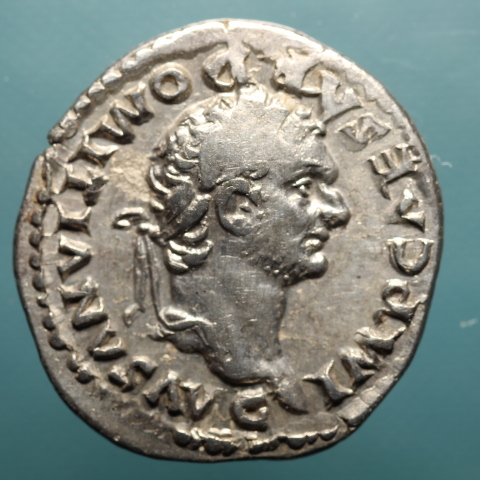
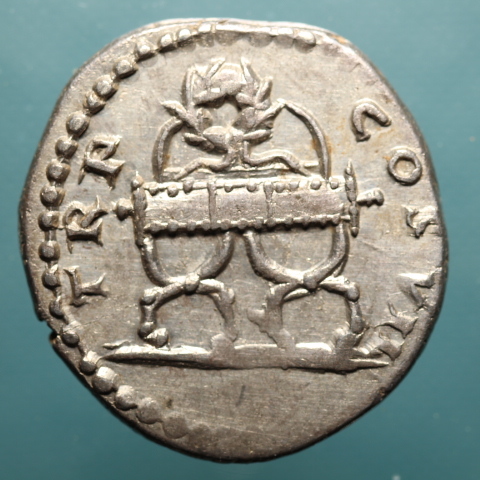
The reverse shows a curious sort of pulvinar, a curule chair, something not to be occupied by gods at all but by men, high-ranking men in Roman society. The use of the chair required the sitter to have held a curule magistracy, in other words, a consulship. On the curule chair rests a wreath, presumably a mourning wreath.
It is evident, considering the context, that this is the pulvinar of a deified emperor, without a doubt the deified Vespasian, Titus and Domitian's own father, a relatively new divus in the Roman pantheon. Now, although a divus is different from a deus in as much as a deus has always been a god, and a divus has only become a god after a special vote in the Roman Senate, this was still a very important point to make in establishing Domitian's credentials to rule, and I believe that the purpose for the inclusion of this reverse in this commemorative coin issue is clear enough: Domitian is the son of a god.
In the regular issues struck at the same time as this commemorative issue, two of the five alternating obverse inscriptions contain the phrase DIVI VESP F DOMIT, divi Vespasiani filius Domitianus, the deified Vespasian's son Domitian. And that is precisely what this reverse illustrates--let me say it again--Domitian is the son of a god!
(By the way, it is possible that this specific coin in my collection "is a rare variation in the design of the wreath and curule chair." In such a variation, according to Ben L. Damsky ("The throne and curule chair types of Titus and Domitian," Schweizerische numismatische Runschau, 1995), "portions of an unadorned semicircle are visible behind the wreath." This is certainly true of my coin, however I would like to determine the significance of Prof Damsky's information independently before denoting this one "RIC 1 var.")
The identification of this curule chair reverse to Vespasian did not originate with me. But that's okay. I expect to break some important new ground during the next few weeks.
Next: The Commemorative Issue of 81: Part 2, Domitian denarius, RIC 2, Festina lente!

